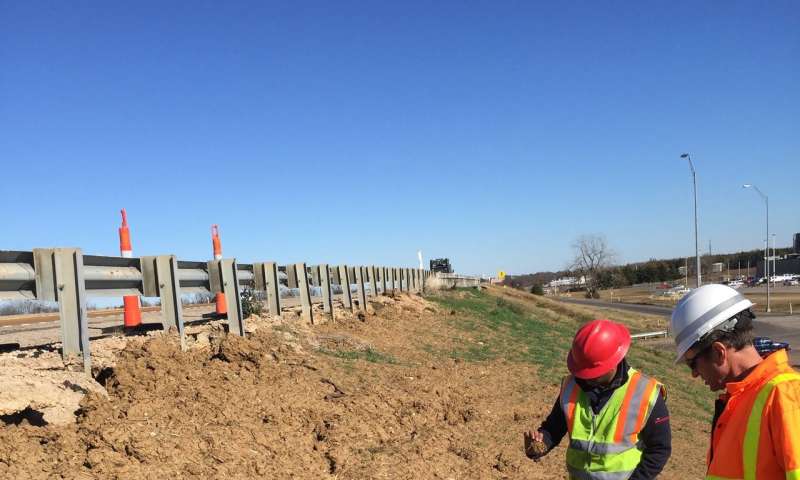UTA researcher to use grant to employ better ways to bolster embankments, soil

A UTA civil engineering soil researcher is using multiple-year, $600,000 grant funding from the U.S. Department of Transportation regional center and the Texas Department of Transportation that will employ geopolymers for soil modification and sustainable cement materials to strengthen highway embankments in the Paris, Texas, district.
Anand Puppala, civil engineering professor and the associate dean for research in The University of Texas at Arlington's College of Engineering, is the lead investigator on the project. Funding is from the Louisiana State University-led Transportation Consortium of South-Central States, a University Transportation Center that was created in late 2016 through $300 million in U.S. Department of Transportation funding.
"Geopolymers and the cementitious material leave a low carbon footprint, making it attractive environmentally," Puppala said. "We use waste and convert that into cementitious material. It cuts down on the amount of lime and cement normally used. It replaces those materials with the geopolymers, which are like an ash material."
Puppala said the second part of the project involves using lime treatment on slopes to stop cracks in the soil.
"That will be done at the field sites using 18- to 24-inch thick treated soil design models," Puppala said. "This is similar to what we did with the U.S. Army Corps of Engineers to help stabilize some of the North Texas dams a few years ago. Currently we are designing a slope treatment for the Paris district using advanced geomaterial testing and modeling."
Puppala said the projects are receiving strong collaboration through Texas A&M University and LSU, and are supporting three doctoral students and two postdoctoral researchers.
LSU's Navid Jafari, an assistant professor in the Department of Civil and Environmental Engineering, is contributing on the slope studies portion of the project.
Sayantan Chakraborty, a UTA post-doctoral student, and UTA doctoral student Burak Boluk also are assisting with the slope studies portion of the project. Surya Sarat Chandra Congress, a UTA doctoral student, is providing the unmanned aerial vehicle data collection part of the slope stabilization project.
Miladin Radovic, professor in the Materials Science and Engineering Department at Texas A&M University and director of TAMU's Materials Characterization Facility, is a collaborating partner on the geopolymers project.
Aritra Banerjee, a UTA civil engineering adjunct professor and research scientist at The UTA Research Institute, will play a major part in the project. UTA doctoral student Rinu Ann Samuel also is contributing.
"The geopolymer we're using is a silica similar to sand," Banerjee said. "It came about in the 1950s but we've perfected the process to synthesize and create it. We anticipate more applications and research works in this field."
Puppala's projects are a prime example of building sustainable urban communities, a theme of the university's Strategic Plan 2020: Bold Solutions | Global Impact.
Engineering Dean Peter Crouch said Puppala is a consummate researcher.
"Dr. Puppala has built up a great many important relationships with governmental state agencies in Texas, and is able to leverage this toward the buildup of UTA's great depth of expertise in civil infrastructure," Crouch said. "It seems like everything he does will have a long-lasting beneficial effect on Texas."
Provided by University of Texas at Arlington